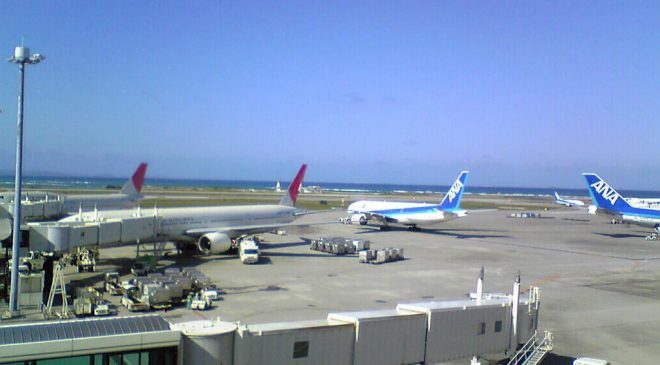
System is designed to accelerate the customs procedures by confirming travellers’ identities .
Okinawa Japan’s Naha Airport has chosen an electronic customs procedure system utilizing face recognition at the customs inspection areas. The system is designed to accelerate the customs procedures at leading airports, where NEC’s face recognition technology can confirm travellers’ identities when using the system’s electronic declaration terminal and passing through its exit gates.
This electronic customs procedure system has also been provided to six other major airports in Japan including New Chitose Airport; Narita International Airport; Haneda Airport; Chubu International Airport; Kansai International Airport; and Fukuoka Airport, based on an order from Japan Customs, under the Ministry of Finance.
NEC will also accelerate customs procedures by enabling baggage to be reported electronically through the use of smartphone applications.
The electronic customs procedure system consists of customs declaration apps, which simplify customs and declaration procedures for baggage, an electronic declaration terminal, and an exit gate that enables passengers to pass through using face recognition.
The exit gate will be equipped with NEC’s AI engine “NeoFace,” which is the core technology of its biometric identification portfolio “Bio-IDiom,” and has won the world’s No.1 recognition accuracy. The system operates by taking a facial image at an electronic declaration terminal installed at the customs inspection area, this image is then matched with a facial image that is taken by a face recognition camera at an exit gate.
Since the face of a person approaching an exit gate is continuously photographed, walk-through authentication is possible, without requiring travellers to stop. Smooth identification contributes to reducing the congestion of customs inspection areas and shortening travellers’ waiting times.
Customs declaration apps and an electronic declaration terminal enable efficient and easy electronic declaration for customs inspections. Travelers enter the contents of their portable goods with customs declaration apps, obtain a QR code, and then read their passport and the QR code with an electronic declaration terminal installed in the customs inspection area.
In addition, during operation of the electronic declaration terminal, a traveller is photographed with a built-in camera and checked against their facial image embedded in the IC chip of their passport. The facial image taken at the terminal is only used for identification processes and is deleted in an appropriate manner after use.




